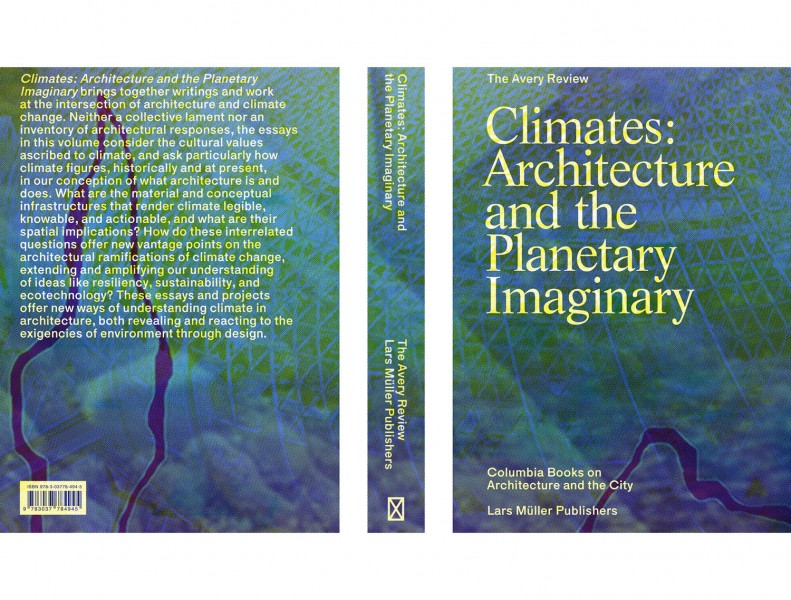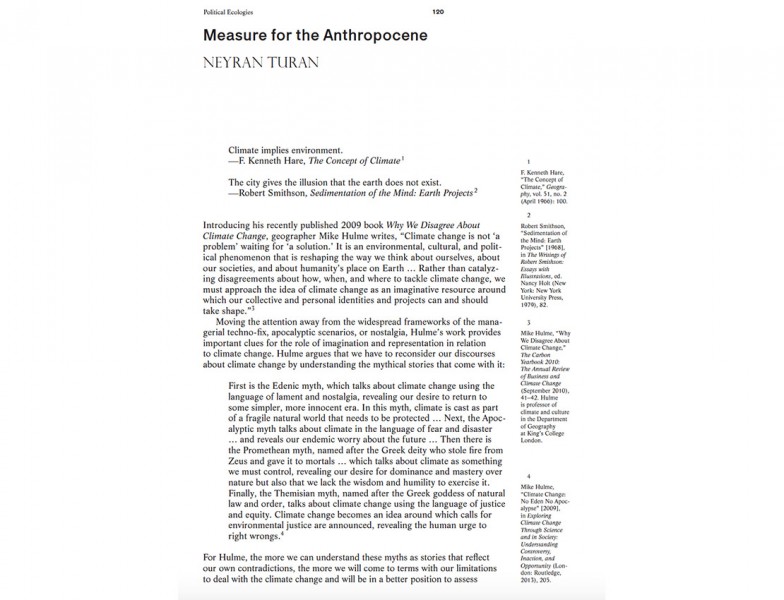Introducing his recently published 2009 book Why We Disagree About Climate Change, geographer Mike Hulme writes, "Climate change is not 'a problem' waiting for 'a solution.' It is an environmental, cultural, and political phenomenon that is reshaping the way we think about ourselves, about our societies, and about humanity's place on Earth … Rather than catalyzing disagreements about how, when, and where to tackle climate change, we must approach the idea of climate change as an imaginative resource around which our collective and personal identities and projects can and should take shape." 1 Moving the attention away from the widespread frameworks of the managerial techno-fix, apocalyptic scenarios, or nostalgia, Hulme's work provides important clues for the role of imagination and representation in relation to climate change. Hulme argues that we have to reconsider our discourses about climate change by understanding the mythical stories that come with it. For Hulme, the more we can understand these myths as stories that reflect our own contradictions, the more we will come to terms with our limitations to deal with the climate change and will be in a better position to assess its potentials.
Hulme's work is all the more noteworthy if one considers that almost all of these myths have infiltrated architectural and urban discourses recently. So how exactly are we to reimagine climate change beyond these myths? And more specifically, what can design possibly contribute toward these urgent concerns? Rather than limiting the role of climate change for design to an external reality to master or solve, might we see it as an opportunity to prompt a renewed understanding of realism for architecture? What follows is a brief elaboration on this question and the disciplinary and cultural potentials of such a provocation.
[1] : Mike Hulme, "Why We Disagree About Climate Change," The Carbon Yearbook 2010: The Annual Review of Business and Climate Change (September 2010), 41–42.

